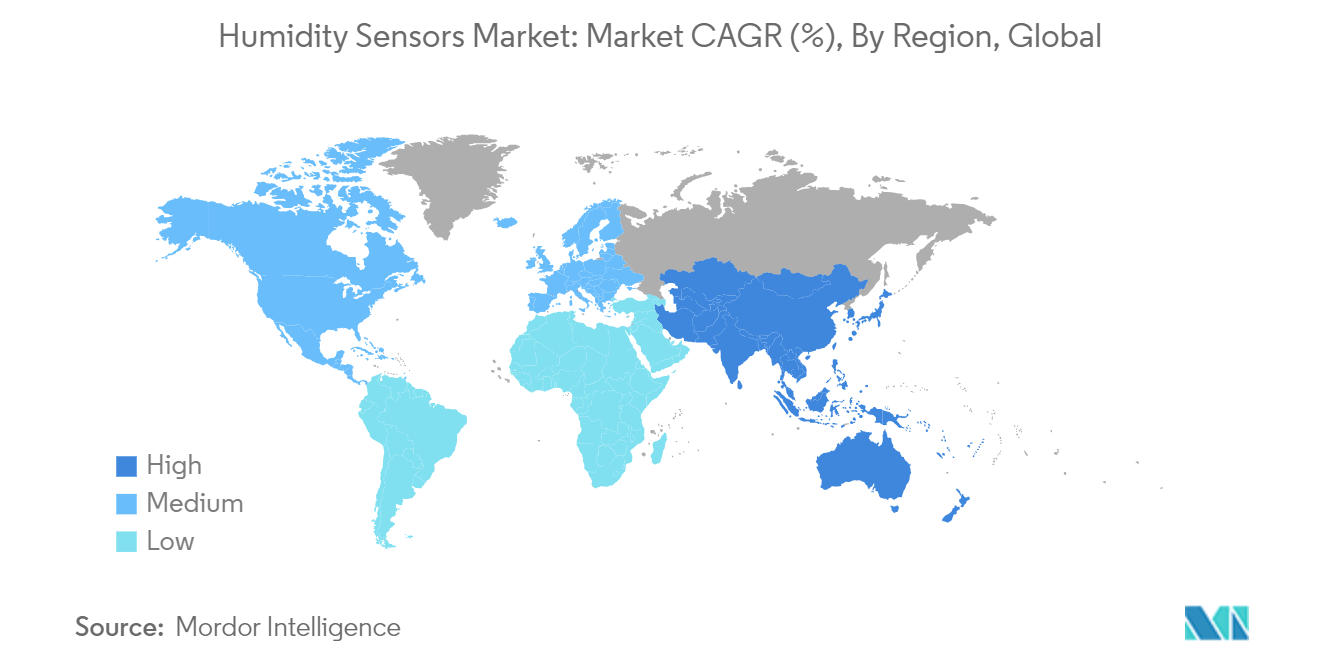Market Trends of Humidity Sensors Industry
Automotive Sector to Witness Major Growth
- The automotive sector encompasses a diverse array of companies and entities engaged in creating, advancing, producing, promoting, selling, maintaining, and customizing automobiles. It stands as one of the largest industries globally in terms of revenue, with numerous companies consistently investing in its growth. This industry also presents opportunities for the utilization of humidity sensors used to reduce misting-up of the windows and enhance comfort by managing the humidity levels inside the car.
- The car market grew to approximately 67.2 million vehicles in 2022, compared to 66.7 million in 2021. The industry saw a decline in sales in 2020 and 2021 due to a weakening global economy. The COVID-19 pandemic and Russia's war on Ukraine caused a shortage in automotive semiconductors and supply chain issues in 2022. However, it was expected to resume growth in 2023 and reach 70.8 million units. Similar growth trends are expected to shape the demand for automotive in the future, which further translates to an increase in the market for humidity sensors.
- The automotive sector employs humidity sensors to oversee and manage the climate within vehicles. These sensors play a crucial role in regulating the air conditioning and ventilation system of cars, ensuring that the windows defrost adequately for enhanced safety.
- Moreover, they activate the ventilation process solely when the humidity level surpasses a specific threshold, thereby minimizing power usage and enhancing the overall efficiency of vehicles. As a result, the demand for humidity sensors in the automotive industry continues to expand, fostering market growth. The growing sales of the vehicles and investments in boosting vehicle production are expected to drive the market's potential.

Asia-Pacific is Expected to Dominate the Market
- The humidity sensors market in Asia-Pacific is expected to witness significant growth over the forecast period. Sensors are largely manufactured in the Asia-Pacific region, and sensor technology is widely being used worldwide as cutting-edge technologies rely on the functioning of the sensors.
- The HVAC industry is fueled by infrastructure development, technological advancements, growing tourism activities, advancing disposable income, and government initiatives promoting energy efficiency. The industry is adopting automation, IoT, and AI integration, and the demand for higher-performing and energy-efficient systems is increasing. The region is expected to account for the growth of oil and gas demand. The oil and gas industry often operates in severe onshore and offshore environments under extreme weather conditions. HVAC systems ensure that indoor workspaces remain habitable by maintaining air quality, temperature, and humidity, driving the market growth.
- The 22nd edition of ACREX India, one of the largest exhibitions for air conditioning, heating, ventilation, and intelligent buildings in South Asia, was held in March 2023 at the Bombay Exhibition Centre in Mumbai. The event, organized by the Indian Society of Heating, Refrigerating and Air Conditioning Engineers (ISHRAE) in partnership with Informa Markets, showcased India’s thriving HVAC industry, seeking to contribute to the Prime Minister’s Atmanirbhar vision. The focus would be on technological advancements in the HVAC sector, which are essential for a better future.
- Companies operating in the market focus on innovating new products as part of their business expansion. For instance, in July 2023, Weathernews Inc. and Omron Corporation collaborated and developed a new weather IoT sensor, which was released as Soratena Pro. Soratena Pro is a high-performance weather IoT sensor that monitors elements, including air temperature, humidity, atmospheric pressure, rainfall, wind direction, and wind velocity. Soratena Pro was jointly developed by OMRON, which specializes in sensor development, and Weathernews boasts technology for the highest weather forecast accuracy, leveraging the strengths of both companies.
- The region is also witnessing growth in the food and beverage sectors, with various domestic and international food service outlets entering the region. The use of technology in the food industry is also growing from preparing to consuming food. The food and beverage industry is also a significant user of humidity sensors that monitor the temperature and humidity of food products to prevent any spoilage.
- According to OICA, China took the top position in the production of commercial vehicles in 2022 with 3,184.53 vehicles. Japan and Thailand took second and third positions with 1,269.16 and 1,289.46 production of commercial vehicles, respectively. Moreover, vehicle electrification and hybridization, alliances among automotive players, and rising disposable income stimulate the demand for automotive sensors in the automotive sector. Countries such as China contribute substantially to expanding the global automotive sensors industry. The region is also home to a few large automakers worldwide and is expected to advance its automotive sensors, including the humidity sensors market, over the forecast period.


